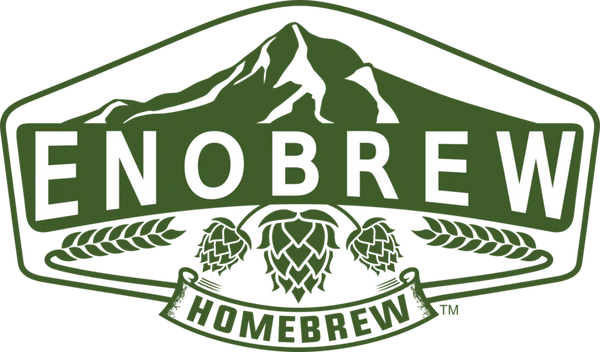
DIY Wine: From Grapes to Greatness
kimjohn lubguban
Here’s the truth about winemaking:
It’s not some elite, mysterious art reserved for people with French accents and sprawling vineyards. You don’t need a fancy château or a million-dollar wine press. What you need is grit, some solid equipment, and this guide.
Winemaking is just glorified chemistry—but don’t let that scare you. Whether you’re stomping grapes or starting with store-bought juice, you’re about to become the hero of your next dinner party. Let’s get those fermentation tanks rolling!
The Basics of Winemaking
At its core, wine is just fermented grape juice. That’s it. But how you handle the details—like sugar levels, yeast, and timing—is where the magic happens.
Here’s the journey your wine will take:
- Crushing: Get the juice out of those grapes.
- Fermenting: Turn that sugar into booze with the help of yeast.
- Racking: Separate your wine from the leftover grape gunk (aka “lees”).
- Aging: Let it chill and develop those delicious flavors.
- Bottling: Capture your masterpiece in a bottle.
Let’s break it down step-by-step.
Step 1: Crushing It (Literally)
This is where the juice meets the pulp. If you’ve got fresh grapes, you’ll need to crush them. Don’t have a grape crusher? No worries—channel your inner Lucille Ball and stomp away. (Pro tip: wash your feet first. Please.)
If fresh grapes aren’t an option, you can totally use grape juice. Just make sure it’s 100% juice with no preservatives—those are yeast killers.
Step 2: Fermentation Station
Fermentation is where the magic happens. You’re taking all that sugar in the grapes and turning it into alcohol. Here’s how to get it right:
- Pick Your Yeast Wisely: Different yeasts = different flavors. Champagne yeast gives you a dry finish, while Montrachet yeast leans fruitier.
- Temperature Matters: Aim for 68–72°F for red wine, and a cooler 55–60°F for whites. Too hot? The yeast might die. Too cold? It won’t wake up.
- Don’t Forget the Nutrients: Yeast needs food too! Add some yeast nutrients to keep it happy and productive.
Let it bubble away for 1–2 weeks. You’ll know fermentation is done when the bubbling slows down and your wine starts smelling less like grape juice and more like, well, wine.
Step 3: Racking Like a Pro
After fermentation, you’ll have a murky mix of wine and sediment. This is where racking comes in—aka transferring your wine to a new container, leaving the gunk behind.
Use a siphon to move the wine into a clean carboy (that’s a fancy word for a glass jug). Pro tip: Avoid splashing! Oxygen is great for humans, terrible for wine.
Step 4: Aging Like Fine… Well, Wine
Here’s where patience pays off. Aging allows your wine to mellow and develop those complex flavors that make people go, “Wow, did you really make this?”
- How Long?
- Whites: 3–6 months.
- Reds: 6 months to a year (or more if you’re feeling fancy).
-
Where to Store It?
Keep it cool (55–65°F) and away from light. A dark closet works if you don’t have a wine cellar.
Step 5: Bottling the Good Stuff
When your wine is tasting smooth and balanced, it’s time to bottle. Sanitize your bottles, siphon in the wine, and cork them up.
Optional but worth it: Add a label. Whether it’s something classy or hilariously over-the-top, it’s your wine—own it.
Troubleshooting for Rookie Winemakers
- Wine Tastes Flat: Add some acid blend to brighten it up.
- It’s Too Sweet: Either ferment longer or mix in a dry wine to balance it.
- Fermentation Isn’t Happening: Check your yeast and make sure your juice doesn’t have preservatives.
Why Make Your Own Wine?
Let’s be real—homemade wine isn’t about saving money (although it can be cheaper). It’s about control. You get to decide how sweet, dry, or bold it is. You can experiment with flavors (pineapple wine, anyone?) or stick to classic reds and whites.
And let’s not forget the bragging rights. There’s nothing quite like serving a bottle of wine at dinner and casually dropping, “Oh yeah, I made this.”
Your Next Steps
Ready to get started? Grab some grapes, juice, or a winemaking kit and start experimenting. You’ll mess up a batch or two, but that’s part of the fun. Before you know it, you’ll be the proud owner of your own private label.
Cheers to your winemaking journey!
Related posts
View all-

Winemaking 101: Your Guide to Bottling the Perf...
Wine is more than a drink.It’s history, culture, and pure joy in a glass. For thousands of years, winemakers have turned humble grapes into something magical. Now, it’s your turn...
Winemaking 101: Your Guide to Bottling the Perf...
Wine is more than a drink.It’s history, culture, and pure joy in a glass. For thousands of years, winemakers have turned humble grapes into something magical. Now, it’s your turn...
-

Mead Magic: A Beginner’s Guide to Brewing Honey...
Here’s the buzz about mead:It’s the OG alcoholic beverage. Before beer, before wine, there was mead. Vikings, kings, and ancient poets swore by this honey-fermented ambrosia. And guess what? You...
Mead Magic: A Beginner’s Guide to Brewing Honey...
Here’s the buzz about mead:It’s the OG alcoholic beverage. Before beer, before wine, there was mead. Vikings, kings, and ancient poets swore by this honey-fermented ambrosia. And guess what? You...
-

Booch Boss: How to Brew the Perfect Kombucha at...
Here’s the lowdown on kombucha:It’s not just a drink—it’s a lifestyle. A fizzy, tangy, probiotic-packed elixir that tastes like health and rebellion had a baby. Making it at home? That’s...
Booch Boss: How to Brew the Perfect Kombucha at...
Here’s the lowdown on kombucha:It’s not just a drink—it’s a lifestyle. A fizzy, tangy, probiotic-packed elixir that tastes like health and rebellion had a baby. Making it at home? That’s...



